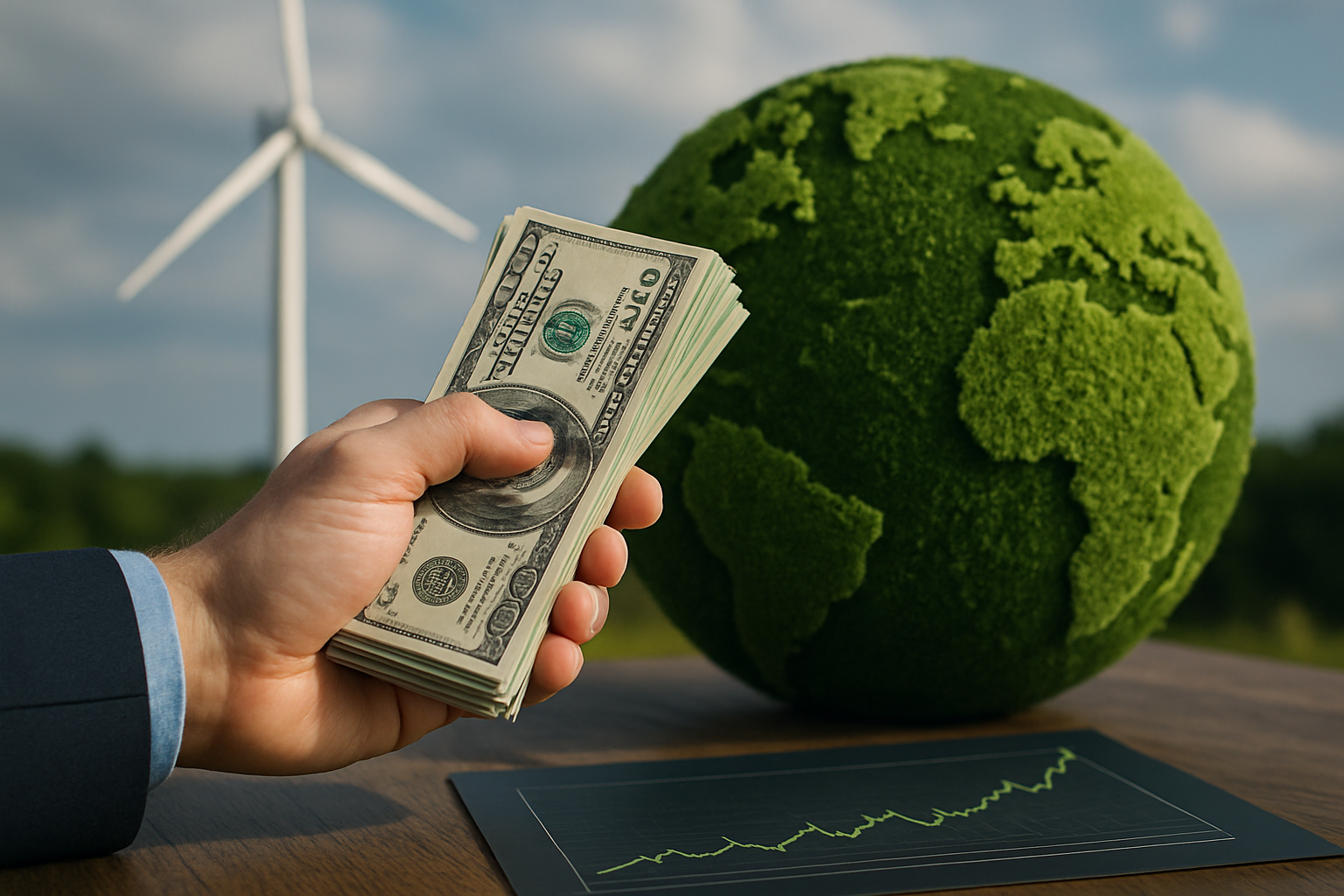Navigating the Rise of Green Bonds: A New Frontier in Sustainable Investing
In an era of increasing environmental consciousness, green bonds have emerged as a powerful tool for financing projects that benefit the planet. This innovative financial instrument is reshaping the landscape of sustainable investing, offering a unique opportunity for investors to align their portfolios with their values while potentially reaping attractive returns. As the global community rallies to address climate change and promote sustainability, green bonds are taking center stage in the world of finance.

The Genesis of Green Bonds
The concept of green bonds first emerged in 2007 when the European Investment Bank issued a €600 million “Climate Awareness Bond.” This pioneering financial instrument was designed to fund renewable energy and energy efficiency projects. The World Bank followed suit in 2008, issuing its first green bond and setting the stage for a new era in sustainable finance.
Initially, green bonds were primarily the domain of multilateral institutions and development banks. However, as awareness of climate change and environmental issues grew, corporations and governments began to recognize the potential of these instruments. By 2013, the first corporate green bond was issued by Vasakronan, a Swedish property company, marking a significant milestone in the market’s evolution.
The Mechanics of Green Bonds
At their core, green bonds function similarly to traditional bonds. They are fixed-income financial instruments that represent a loan made by an investor to a borrower, typically a corporate or governmental entity. The key distinction lies in the use of proceeds: green bonds are earmarked specifically for projects with environmental benefits.
Issuers of green bonds commit to using the funds raised for eligible green projects, which may include renewable energy, energy efficiency, sustainable waste management, clean transportation, or biodiversity conservation. This commitment is typically outlined in a green bond framework, which provides investors with transparency regarding the intended use of funds and the expected environmental impact.
The Green Bond Market Today
The green bond market has experienced exponential growth since its inception. According to the Climate Bonds Initiative, global green bond issuance reached a record $269.5 billion in 2020, a remarkable feat considering the economic challenges posed by the COVID-19 pandemic. This growth trajectory has continued, with estimates suggesting that the market could surpass $1 trillion in annual issuance by 2023.
Several factors have contributed to this rapid expansion. Increasing awareness of climate change and its economic implications has driven demand from both institutional and retail investors. Simultaneously, regulatory pressures and voluntary commitments to sustainable finance have encouraged issuers to explore green bond opportunities. The development of green bond standards and certification processes has also bolstered investor confidence in the integrity of these instruments.
Evaluating Green Bonds: Challenges and Opportunities
While the growth of the green bond market presents exciting opportunities, it also brings challenges for investors. One key consideration is the issue of “greenwashing,” where bonds may be labeled as green without delivering substantial environmental benefits. To address this concern, various organizations have developed green bond principles and certification schemes to ensure the credibility of green bond issuances.
Another challenge lies in assessing the environmental impact of green bonds. Unlike traditional financial metrics, measuring the ecological benefits of these instruments can be complex and subjective. Investors must navigate a landscape of varying reporting standards and impact measurement methodologies to make informed decisions.
Despite these challenges, green bonds offer several potential advantages for investors. They provide an opportunity to diversify portfolios while contributing to positive environmental outcomes. Many green bonds also benefit from favorable regulatory treatment and may offer tax incentives in certain jurisdictions. Furthermore, as demand for sustainable investments grows, green bonds may offer a hedge against the risks associated with climate change and environmental degradation.
The Future of Green Bonds
As the green bond market matures, several trends are shaping its future trajectory. One emerging development is the rise of sustainability-linked bonds, which tie the bond’s financial characteristics to the issuer’s achievement of specific sustainability targets. This approach provides issuers with more flexibility while maintaining a focus on environmental performance.
Another trend is the expansion of green bonds into new sectors and geographies. While initially concentrated in developed markets and sectors like energy and real estate, green bonds are now being issued across a broader range of industries and emerging economies. This diversification is opening up new opportunities for investors and issuers alike.
Key Considerations for Green Bond Investors
-
Thoroughly review the issuer’s green bond framework to understand the intended use of proceeds and impact measurement approach
-
Look for third-party verification or certification of green bonds to ensure credibility
-
Consider the issuer’s overall sustainability strategy and track record, not just the green bond itself
-
Be aware of potential differences in liquidity between green bonds and conventional bonds
-
Stay informed about evolving green bond standards and regulations in relevant jurisdictions
As the world grapples with the urgent need to transition to a low-carbon economy, green bonds stand out as a powerful tool for channeling capital towards sustainable solutions. For investors seeking to align their financial goals with environmental values, these innovative instruments offer a compelling opportunity. By understanding the mechanics, challenges, and potential of green bonds, investors can play a crucial role in financing the transition to a more sustainable future while potentially benefiting from the growth of this dynamic market segment.




